Understand your personality to connect with others
We talk about communication all the time.
How many times have you heard; we don’t communicate well as a company? Or my boss doesn’t listen to me. Or my wife. Or my husband. Or my kids.
It’s over and over.
The problem is that we don’t understand what that means. We don’t know why we can’t communicate, and it gets chalked up to “they’re just different kinds of people.”
Which is exactly right, though slightly misstated. More specifically, people have different personality types. Understanding those broad classes of personality is the first step toward happier and more productive relationships.
I’ve been thinking about this a lot lately because it’s the topic of the SIDECAR February Fuel Tank. My guest is Dr. Tony Alessandra, an expert in this field.
You may recognize Dr. Tony if you are active in our training programs (and you should be). His courses offer a practical approach to figuring out who you are, how to read others and how to use that information to connect with people.
In my preparation, I ran across this information from Dr. Tony that I think sums it up pretty well.
You can download a one-pager here to review later but I’ve included some of the information below.
I hope it gets you excited for the Fuel Tank. I hope to see you there.
Here are the seven areas where behavior assessments can be beneficial:
1) Improve Hiring & Selection
The right person in the right job is priceless. The wrong one is a nightmare waiting to happen. Accurately identify job applicants BEFORE the interview, make scientifically informed judgments and build an organization of A+ employees.
2) Increase Sales
Teach your sales team powerful behavior profiling skills. Empower them to identify— to your organization’s advantage— observable behaviors, then adapt their selling style to ft the customer’s buying style.
3) Improve Customer Service
Know in advance that your people believe in your organization and care about your customers. Better equip and train your customer support team with the invaluable communication and behavior profiling skills that pay countless dividends.
4) Increase Productivity
Identify with scientific accuracy the strengths and shortcomings of each employee. Create observable action plans, from the data, that maximizes your organization’s talent.
5) Reduce Employee Turnover
Ensure the best possible positional job “fit” for each new hire. Great fit means stronger retention rates, which lowers the costs associated with turnover.
6) Customize Employee Training Model
One size fits ONE, not all. Learn how each person learns best and get them back to productivity sooner.
7) Team Building
Know who fts with whom in advance. Create your teams based on compatible skills and traits, not just generic ideas of balance. Top-level teams are comprised of behaviorally compatible members with an optimal array of complimenting proficiencies.










